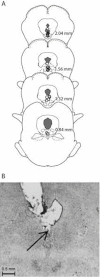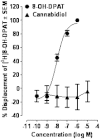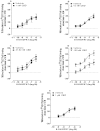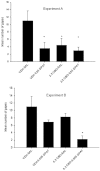Cannabidiol, a non-psychotropic component of cannabis, attenuates vomiting and nausea-like behaviour via indirect agonism of 5-HT(1A) somatodendritic autoreceptors in the dorsal raphe nucleus
- PMID: 21827451
- PMCID: PMC3423241
- DOI: 10.1111/j.1476-5381.2011.01621.x
Cannabidiol, a non-psychotropic component of cannabis, attenuates vomiting and nausea-like behaviour via indirect agonism of 5-HT(1A) somatodendritic autoreceptors in the dorsal raphe nucleus
Abstract
Background and purpose: To evaluate the hypothesis that activation of somatodendritic 5-HT(1A) autoreceptors in the dorsal raphe nucleus (DRN) produces the anti-emetic/anti-nausea effects of cannabidiol (CBD), a primary non-psychoactive cannabinoid found in cannabis.
Experimental approach: The potential of systemic and intra-DRN administration of 5-HT(1A) receptor antagonists, WAY100135 or WAY100635, to prevent the anti-emetic effect of CBD in shrews (Suncus murinus) and the anti-nausea-like effects of CBD (conditioned gaping) in rats were evaluated. Also, the ability of intra-DRN administration of CBD to produce anti-nausea-like effects (and reversal by systemic WAY100635) was assessed. In vitro studies evaluated the potential of CBD to directly target 5-HT(1A) receptors and to modify the ability of the 5-HT(1A) agonist, 8-OH-DPAT, to stimulate [(35) S]GTPγS binding in rat brainstem membranes.
Key results: CBD suppressed nicotine-, lithium chloride (LiCl)- and cisplatin (20 mg·kg(-1) , but not 40 mg·kg(-1) )-induced vomiting in the S. murinus and LiCl-induced conditioned gaping in rats. Anti-emetic and anti-nausea-like effects of CBD were suppressed by WAY100135 and the latter by WAY100635. When administered to the DRN: (i) WAY100635 reversed anti-nausea-like effects of systemic CBD, and (ii) CBD suppressed nausea-like effects, an effect that was reversed by systemic WAY100635. CBD also displayed significant potency (in a bell-shaped dose-response curve) at enhancing the ability of 8-OH-DPAT to stimulate [(35) S]GTPγS binding to rat brainstem membranes in vitro. Systemically administered CBD and 8-OH-DPAT synergistically suppressed LiCl-induced conditioned gaping.
Conclusions and implications: These results suggest that CBD produced its anti-emetic/anti-nausea effects by indirect activation of the somatodendritic 5-HT(1A) autoreceptors in the DRN.
Linked articles: This article is part of a themed section on Cannabinoids in Biology and Medicine. To view the other articles in this section visit http://dx.doi.org/10.1111/bph.2012.165.issue-8. To view Part I of Cannabinoids in Biology and Medicine visit http://dx.doi.org/10.1111/bph.2011.163.issue-7.
© 2011 The Authors. British Journal of Pharmacology © 2011 The British Pharmacological Society.
Figures











References
-
- Andrews PL, Torii Y, Saito H, Matsuki N. The pharmacology of the emetic response to upper gastrointestinal tract stimulation in Suncus murinus. Eur J Pharmacol. 1996;307:305–313. - PubMed
-
- Barrondo S, Salles J. Allosteric modulation of 5-HT(1A) receptors by zinc: binding studies. Neuropharmacology. 2009;56:455–462. - PubMed
-
- Blier P, de Montigny C. Modification of 5-HT neuron properties by sustained administration of the 5-HT1A agonist gepirone: electrophysiological studies in the rat brain. Synapse. 1987;1:470–480. - PubMed
Publication types
MeSH terms
Substances
Grants and funding
LinkOut - more resources
Full Text Sources
Other Literature Sources
Medical

